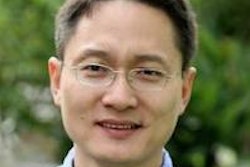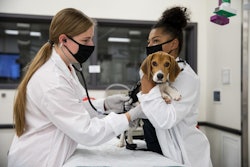Science, Technology Professions Showing Mixed Progress for Women
By Ronald Roach
Growth over the past two decades for women in scientific, technological, engineering and mathematical (STEM) jobs has seen uneven progress, according to a report from the Commission on Professionals in Science and Technology (CPST). 
Analyzing employment data of women in STEM professions from 1983 to 2003, the commission found women gaining in the percentage of jobs held in the social and natural sciences, but only slight changes in their rate of employment in engineering. They also found a decline in the share of positions held by women in mathematics and computer sciences.
Officials say these are disappointing findings for STEM work force policy-makers and others who have worked for at least a quarter of a century to make better use of the talent of women in U.S. science and engineering. Other highlights from the report:
– Overall, women held 44 percent of all jobs in the United States in 1983. By 2003, that level had risen to 47 percent. Looking only at the STEM occupations, the proportion of women in these jobs in 1983 ranged from 16 to 19 percent to 23 to 26 percent of them in 2002. On the whole, women’s representation in science and technology increased by about the same amounts as did their representation in the total work force.
– Women only held 10 percent of the jobs in engineering in 1983, rising just by four percentage points 20 years later in 2002 to 14 percent. The largest gains were in chemical engineering, which has produced significant number of women graduates for many years.
– Women increased their share in all the natural science professions, especially medical science, where women accounted for over half of all employment in 2002. The only other natural science occupation to reach a similar level of participation by women was the group of biological technicians. Overall, in the natural sciences, women represented 38.2 percent of the total work force in 2002.
– In computer science, the percentage of jobs held by women in the “computer systems analysts, scientists, programmers, and related faculty” category was lower at the end of the 20-year period than it was in 1983. Overall growth in these IT occupations strong enough during the 1990s that even while women’s share of these jobs was declining, their absolute numbers continued to increase through the year 2000, but then started to decline. In 1983, women held 30.5 percent of the jobs in the category of computer systems analysts and scientists, programmers and postsecondary computer science teachers, according to the commission. That figure declined to 27.2 percent in 2002.
While many factors influence wages (years of experience, field, etc.), a look at the data of wages across time should show a closing gap between men’s wages and women’s wages, and that is the case for the entire work force. Pay for women was 75.5 percent of that for men in 1995 and 79.4 percent in 2003. In executive/managerial, professional and STEM occupations, however, the trend is the opposite; the wage gap between men and women actually grew between 1995 and 2003. For example, in STEM occupations, pay for women was 81 percent of that for men in 1995, but only 78.7 percent in 2003.
The Commission on Professionals in Science and Technology, founded in 1953 as the Scientific Manpower Commission, is a nonprofit corporation whose membership includes leading professional societies, corporations, institutions and individuals concerned with advancing public understanding of professionals in science and technology, their roles, education and employment.
“Women in Science and Technology: The Sisyphean Challenge of Change,” along with its accompanying data archive, is available at <www.cpst.org>. The next two reports — one on immigrants in the STEM work force and one on underrepresented minorities — will be released in early 2005.
— Wire reports contributed to this article.
© Copyright 2005 by DiverseEducation.com















